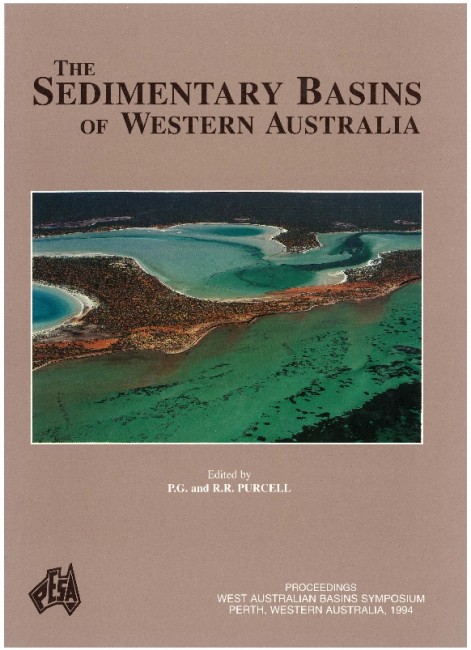Publication Name: The Sedimentary Basins of WA
Authors: P.H. Robinson, H.S. Stead, J.B. O'Reilly and N.K. Guppy
Publication Volume: 1
Date Published: July 1994
Number of Pages: 31
Reference Type: Book Section
Abstract:
Within the Sahul Syncline eleven depositional sequences have been defined for the Late Jurassic to Early Cretaceous period. These sequences depict a changing depositional history that reflects the varying accommodation space created by tectonic and eustatic movements.The sedimentary section comprises, in part, Callovian highstand, fluvial to shoreface sands and Oxfordian highstand, offshore shales, overlain by Kimmeridgian to Tithonian lowstand to transgressive, offshore shales, that were deposited as the syncline rapidly sagged. As subsidence waned, the trough slowly filled with
Berriasian transgressive to highstand shales. By the Valanginian, sedimentation exceeded accommodation space resulting in massive progradation and aggradation that filled the trough with highstand shales and minor
sands. From the mid-Valanginian to the earliest Aptian a veneer of transgressive to highstand marine, glauconitic
shale marked the end of the Sahul Syncline as a structural entity.
In areas surrounding the Sahul Syncline, Callovian (and older) sands exhibit good reservoir potential, but within the trough these sediments are deeply buried and have undergone considerable deterioration. Lowstand
basin floor fan sands are restricted to the deeply buried Kimmeridgian and Tithonian depocentres and, therefore, are also likely to be poor reservoir quality. Mid-Tithonian to early Valanginian highstand progrades, incised valleys and proximal fans are developed along the flanks of the trough. Although, they are difficult to map, these features are likely to contain sands that are part of the most prospective play in the region. Situated on the western and southern flanks, they are buried at moderate depths, are well placed for hydrocarbon charge, and are down-dip of the numerous oil shows and breached oil pools on the Londonderry High to the west.


